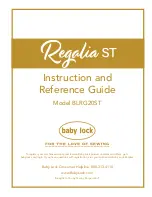
Deleting RAID volumes
This section describes how to use the Intel Matrix Storage Manager option ROM
Configuration Utility to delete RAID volumes.
1.
Press Ctrl+I when prompted to enter the Intel Matrix Storage Manager option
ROM Configuration Utility.
2.
Use the arrow keys to select the RAID volume to be deleted, and press Delete.
3.
When prompted, press Y to confirm the deletion of the selected RAID volume.
4.
After deleting a RAID volume, you can:
v
Return to step 1 to delete additional RAID volumes.
v
See “Creating RAID volumes” on page 53 for RAID volume creation.
v
Use the arrow keys to select
Exit
and press Enter.
v
Use the arrow keys to select
Reset Disks to Non-RAID
, and press Enter.
a.
Use the arrow keys and space to mark individual physical disks to be
reset.
b.
Use the space key to select, and then press Enter to complete the
selection.
c.
When prompted, press Y to confirm the reset action.
d.
After completing the Reset Disks to Non-RAID function, you can:
– Return to step 1 to delete additional RAID volumes.
– See “Creating RAID volumes” on page 53 for RAID volume creation.
– Use the arrow keys to select
Exit
and press Enter.
SUPPORTED SAS RAID configurations
This section provides information that is applicable only for a Windows
environment. For information about configuring RAID in a Linux
®
environment,
contact your Linux software provider.
The following RAID configurations are supported on the Lenovo ThinkStation:
v
RAID Level 0 – Striped disk array
– Two drives minimum.
– Better performance and no fault tolerance.
v
RAID Level 1 – Mirrored disk array
– Two drives.
– Improved read performance and 100% redundancy.
v
RAID Level 1E (1 Enhanced)
– Three drives minimum
- Can always recover from a single drive failure and, in some cases, can
recover from two drives.
- High Performance.
Configuring the system BIOS to enable SAS RAID
functionality
This section describes how to configure the system BIOS to enable SAS RAID
functionality.
1.
Press F1 to enter the system BIOS setup.
2.
Use the arrow keys on the keyboard to select
Advanced
, and press Enter.
3.
Use the arrow keys to select the
LSI SAS Interface
, and press Enter.
54
Hardware Maintenance Manual
Summary of Contents for THINKSTATION D10
Page 1: ......
Page 2: ......
Page 3: ...ThinkStation Hardware Maintenance Manual ...
Page 17: ...Chapter 2 Safety information 11 ...
Page 18: ...12 Hardware Maintenance Manual ...
Page 19: ... 18 kg 37 lbs 32 kg 70 5 lbs 55 kg 121 2 lbs 1 2 Chapter 2 Safety information 13 ...
Page 23: ...Chapter 2 Safety information 17 ...
Page 24: ...1 2 18 Hardware Maintenance Manual ...
Page 25: ...Chapter 2 Safety information 19 ...
Page 26: ...1 2 20 Hardware Maintenance Manual ...
Page 33: ...Chapter 2 Safety information 27 ...
Page 34: ...28 Hardware Maintenance Manual ...
Page 35: ...1 2 Chapter 2 Safety information 29 ...
Page 39: ...Chapter 2 Safety information 33 ...
Page 40: ...1 2 34 Hardware Maintenance Manual ...
Page 44: ...38 Hardware Maintenance Manual ...
Page 54: ...48 Hardware Maintenance Manual ...
Page 58: ...52 Hardware Maintenance Manual ...
Page 64: ...58 Hardware Maintenance Manual ...
Page 94: ...88 Hardware Maintenance Manual ...
Page 103: ...Chapter 9 Replacing FRUs types 6423 and 6483 97 ...
Page 106: ...100 Hardware Maintenance Manual ...
Page 130: ...124 Hardware Maintenance Manual ...
Page 140: ...134 Hardware Maintenance Manual ...
Page 158: ...8 Go to Completing the FRU replacement on page 158 152 Hardware Maintenance Manual ...
Page 247: ......
Page 248: ...Part Number 43C9807 Printed in USA 1P P N 43C9807 ...
















































